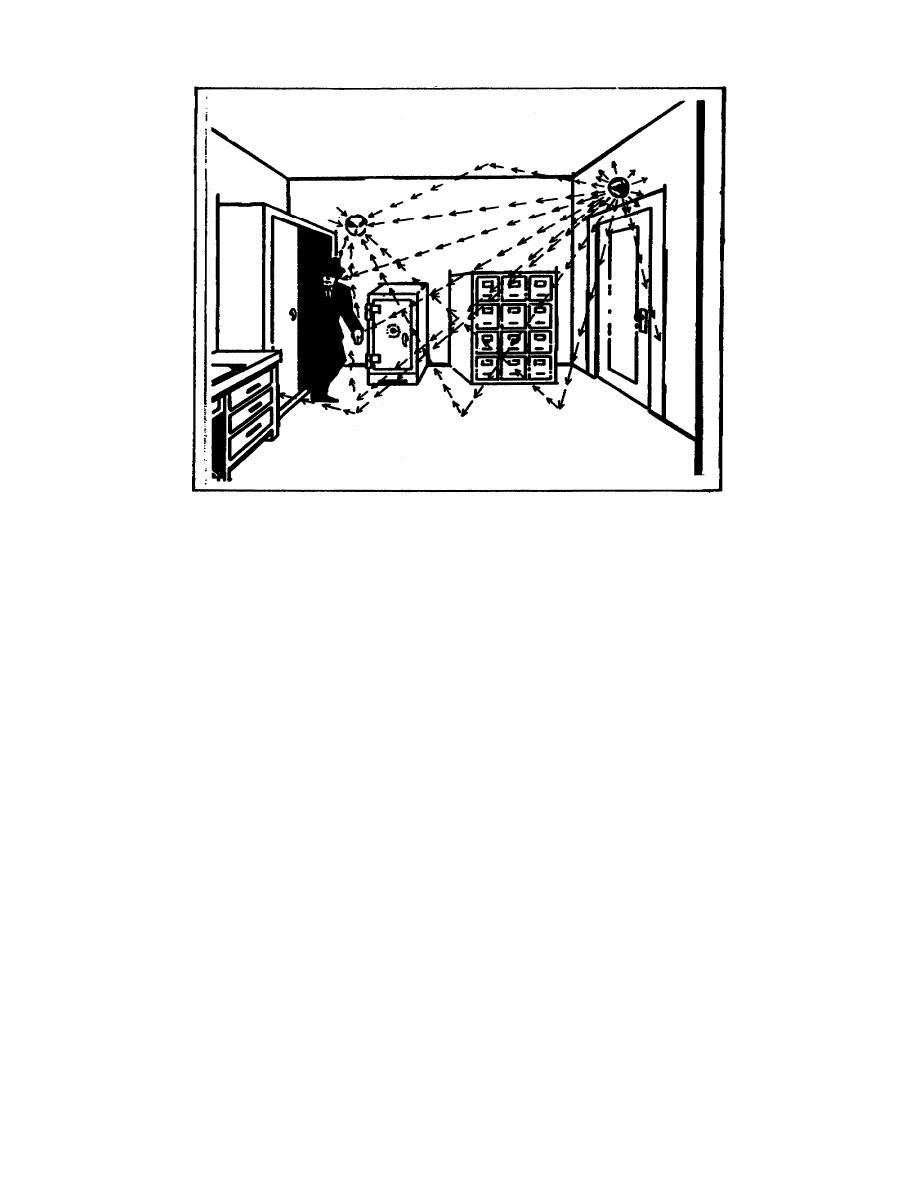
Figure 4-2.
Motion Detection Device.
b. Microwave motion detector sends out a carefully controlled amount of
microwave energy that is reflected off of walls, floors, ceilings and
stationary objects within the area of coverage and returns to the receiver,
establishing a pattern.
Once the pattern has been established, if any
change in that pattern is detected, an alarm is signaled.
Unlike the
ultrasonic sound, microwave will penetrate wood or glass.
(1) Advantages.
Good coverage is provided if antennas are properly
located.
This system is generally not affected by air current, noise, or
sound, and it has high salvage value.
(2) Disadvantages. Coverage is not easily confined to the security
area. Fluorescent lightbulbs will activate the sensor.
c. The infrared motion sensor will set up a pattern where it receives
infrared energy within a preset zone: an intruder moves from one zone to
another; this activates the alarm and causes an increase of infrared energy
in one zone and a decrease in the other.
(1) Advantages.
This system detects stay behinds.
It provides
excellent coverage with proper installation, and it has high salvage value.
(2) Disadvantages. Use of this system is limited to the area to be
covered, and it is affected by weather change.
4-9
MP1002



 Previous Page
Previous Page
